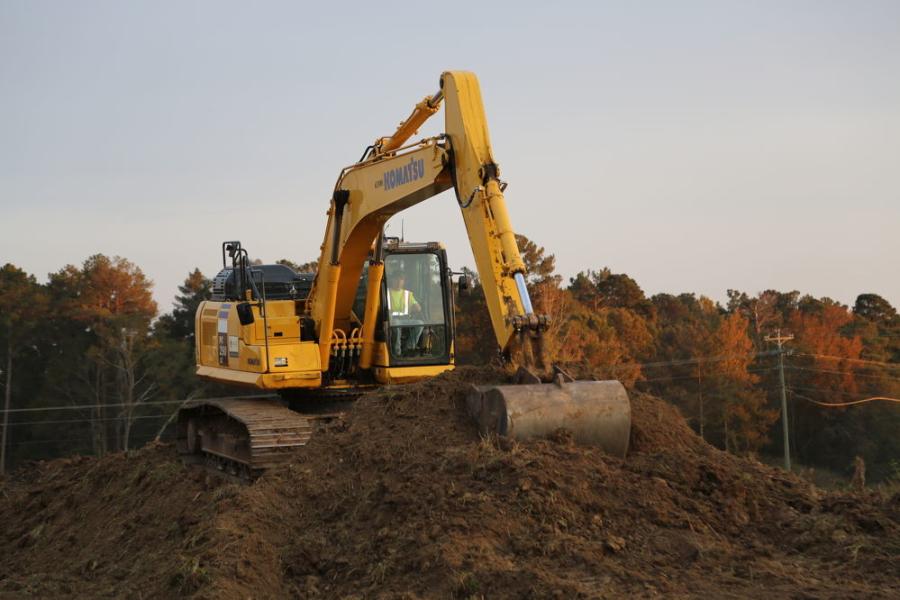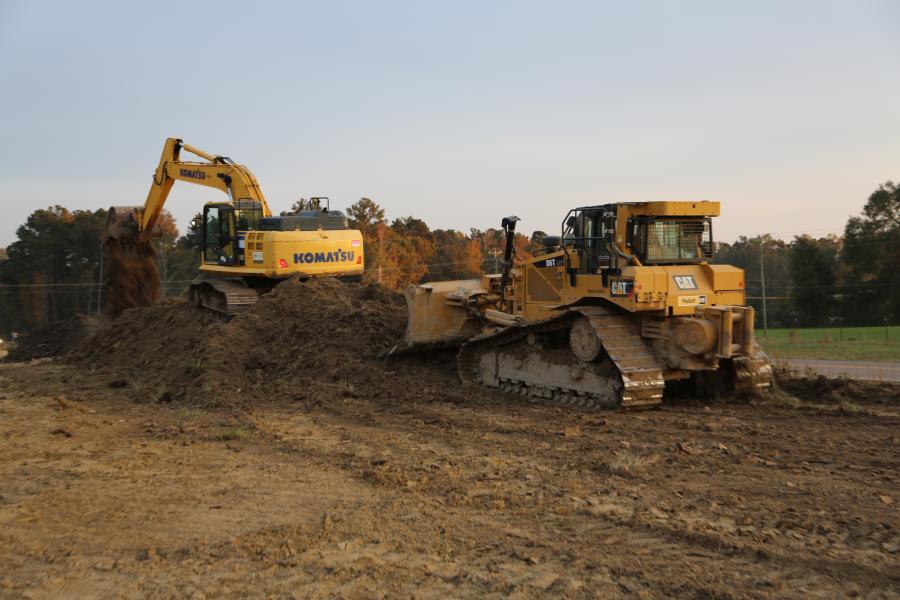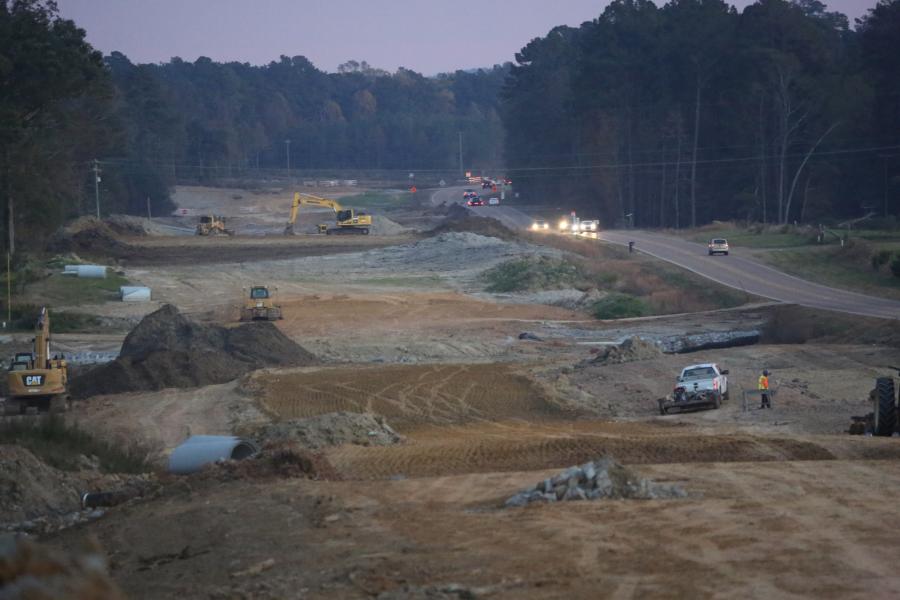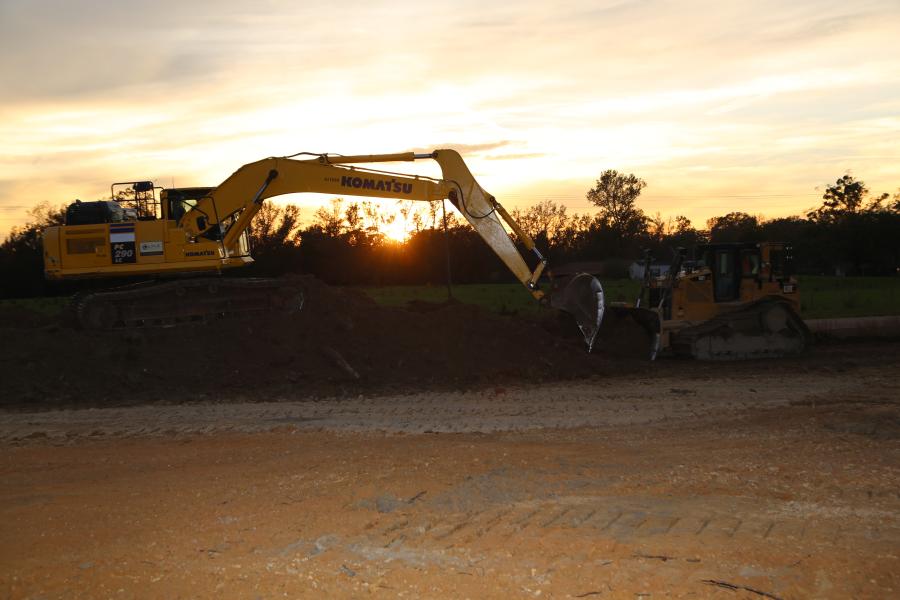In Mississippi, motorists traveling Meridian to Philadelphia will benefit from a $36 million widening project scheduled to be completed in 2023. The expansion of State Route 19 in Neshoba County from Philadelphia to Tucker will improve safety and overall conditions for commuters, as well as local and commercial traffic.
"It will improve every angle of travel for this stretch of SR 19, from safety to efficiency," said Mississippi Department of Transportation (MDOT) project engineer Adam McDaniel. "That means safer driving conditions and quicker travel. We're realigning some of the local roads to tie into the new four-lane as well, making it a safer and more convenient travel experience."
Activity on the heavily traveled corridor has steadily increased. Since 2017, the average annual daily traffic along this stretch of highway has jumped from 5,600 to 6,600 and is still on the rise.
W.G. Yates serves as the general contractor of the project, which is being funded by a $25 million 2018 BUILD grant. The remainder is 80 percent federal funds with a 20 percent state match.
In addition to expanding to four lanes, the new grading and paving will offer smoother riding conditions. But there are challenges for workers.
"This being Neshoba County, we do have some undesirable soil out there, and have had to basically bring in good material to build the road on," said McDaniel. "We hit some high-volume change material, so we had to cut under that and bring in borrowed excavation material to replace it for the subgrade.
"The biggest challenge has primarily been the weather. We've seemingly had rain just about every week, specifically, the amount of rainfall over this past summer."
Currently crews are performing earthwork, box bridge structure construction, drainage structure construction (box culverts) and pipe installation.
Phase I is building the new northbound lanes and getting traffic onto it. Phase II will involve work in the southbound lane, primarily milling and overlaying.
"We do have some construction work that will change grades on the southbound lane, and we'll have to either raise or lower the grade to match the new one. We'll realign some local roads on the southbound side, and mill and overlay on southbound to match the grades."
Phase III will involve putting the final surface lift of asphalt on the northbound lane, along with permanent striping/marking.
"Right now, the only item that is mostly complete is the clearing and grubbing portion of Phase I. This involves clearing the area of trees and growth."
As far as the grading that's taking place, said McDaniel, "We're essentially filling in the hollows and cutting the hills down. The natural topography of the area allows us to remove the tops of the hills and place the existing material into the adjacent low-lying areas, to create a smooth vertical profile. Once all the suitable on-site material is exhausted, the contractor will begin bringing soils in from pre-approved borrow pits to complete the construction of the roadway embankment.
"Stripping the top soil involves taking a dozer out there and pushing it off where we'll be doing the work, and stockpiling it for later use. We'll use it to replace the slopes and to put our permanent grass on. The stockpile topsoil will be re-spread on the slopes and the grass seed will be planted for permanent grass to be established."
McDaniel said the best preventative measure to combat slope erosion is the establishment of perennial vegetation.
"The existing four to six inches of topsoil is removed and stockpiled to place back on top of the slopes after they have been constructed. The highly organic and fertile nature of the topsoil accelerates the growth of the vegetation that's planted. This establishment of grass greatly aids in erosion prevention, which helps us protect the nearby streams and channels from sedimentation."
Erosion control is a critical and challenging component to the project.
"We work hard to make sure it is handled correctly. We look at it every day to make sure we're doing right.
"We're moving all the loose dirt, and have streams and channels that run through here, so we can't allow sediment to get off our project site. With this much earthwork, it's imperative we stay on top of it to make sure our erosion control is up to par.
"In addition, there are six box culverts and six box bridges we are putting in. The box bridges are extensions of the existing box bridges — they're part of our drainage structures. We have single barrel and double barrel.
"We have excess excavation, like that high volume change material that we haul off site. We have borrow excavation to build the roadway out of and get our subgrade up. We typically have three types of excavation. The excess excavation item is used to remove unsuitable or surplus material from the project.
"The borrow excavation item is used to bring in material from pre-approved sources. We also have an unclassified excavation item. This item is used to take on-site material and place it in another location within the project, i.e. taking the material from a hill top and placing it into an adjacent low area."
Regarding cubic yards of dirt moved during construction, plan quantity is 582,000 cu. yds.; 210,000 cu. yds. of borrow excavation; and 17,000 cu. yds. of excess material.
For paving, the new lanes will have three lifts of asphalt. This will include a base lift, intermediate lift and surface lift.
Tasks remaining include finishing the earthwork before dealing with the northbound lanes, building drainage structures and laying pipes.
"Lots of earthwork is to be completed to get our subgrade to grade. After that, we'll be lifting about six inches of subgrade. Then we'll be doing the asphalt paving."
Equipment on the job includes an assortment of 18-wheelers, dump trucks, tractors with discs, track hoes, bulldozers, sheep's foot rollers, steel wheel rollers, pneumatic rollers and concrete pump trucks. Main materials include concrete, asphalt, steel rebar, precast pipes, crushed stone and rip rap.
As with any construction project, motorists will need to be alert throughout the work zone.
"The speed limit has been reduced to 45 mph for safety due to the construction," said McDaniel. "There are nearby residents we're working around, so it's a balancing act.
"Safety is our chief concern. You have all this work going on, construction equipment, lots of trucks in and out of the project using existing roadways and constant traffic in and out. Reducing the speed limit to 45 mph has made it safer, but we still notice some drivers not paying attention and looking around at the work taking place, with so much going on."
Said McDaniel, "Motorists traveling in this work zone should pay close attention to the road. We want our crews to go home safely to their families each day, and they still have a long way to go."
He added, "I take pride in my job and what we're accomplishing out here. Expanding 4.5 miles of roadway is a major task, one that will greatly benefit local traffic and those heading into Meridian by making the area safer and more efficient. It's pretty cool." CEG
Today's top stories


























